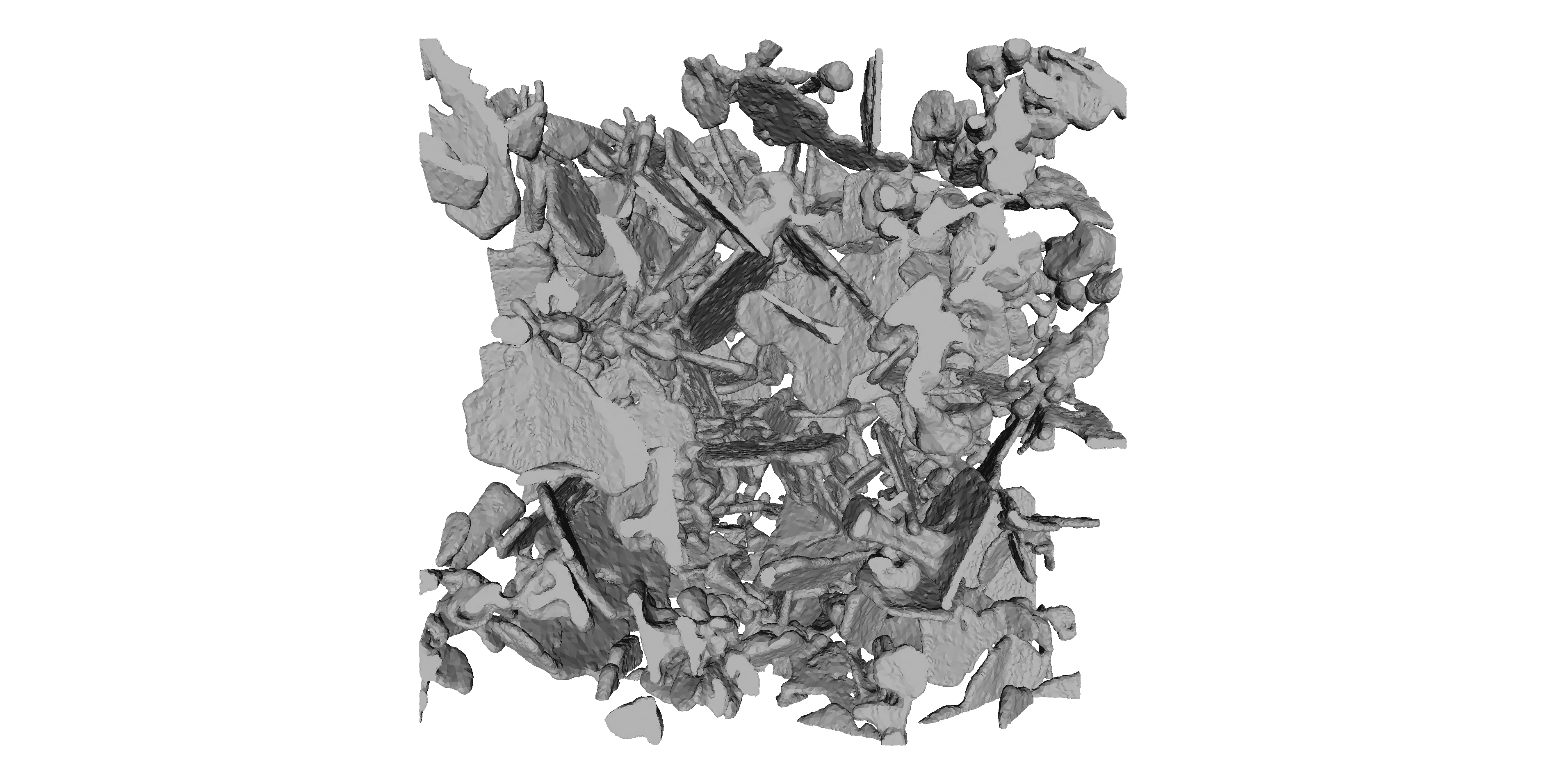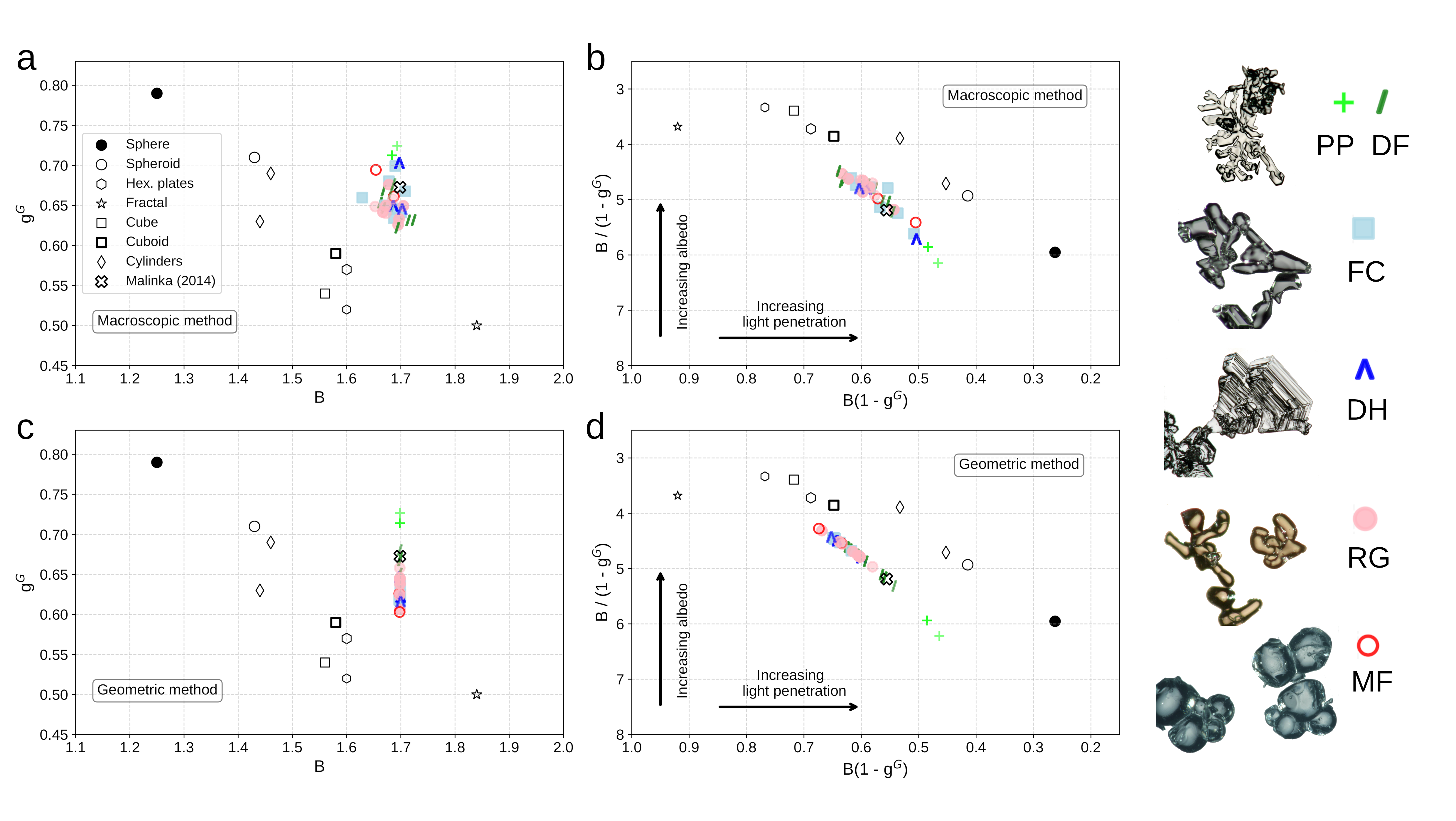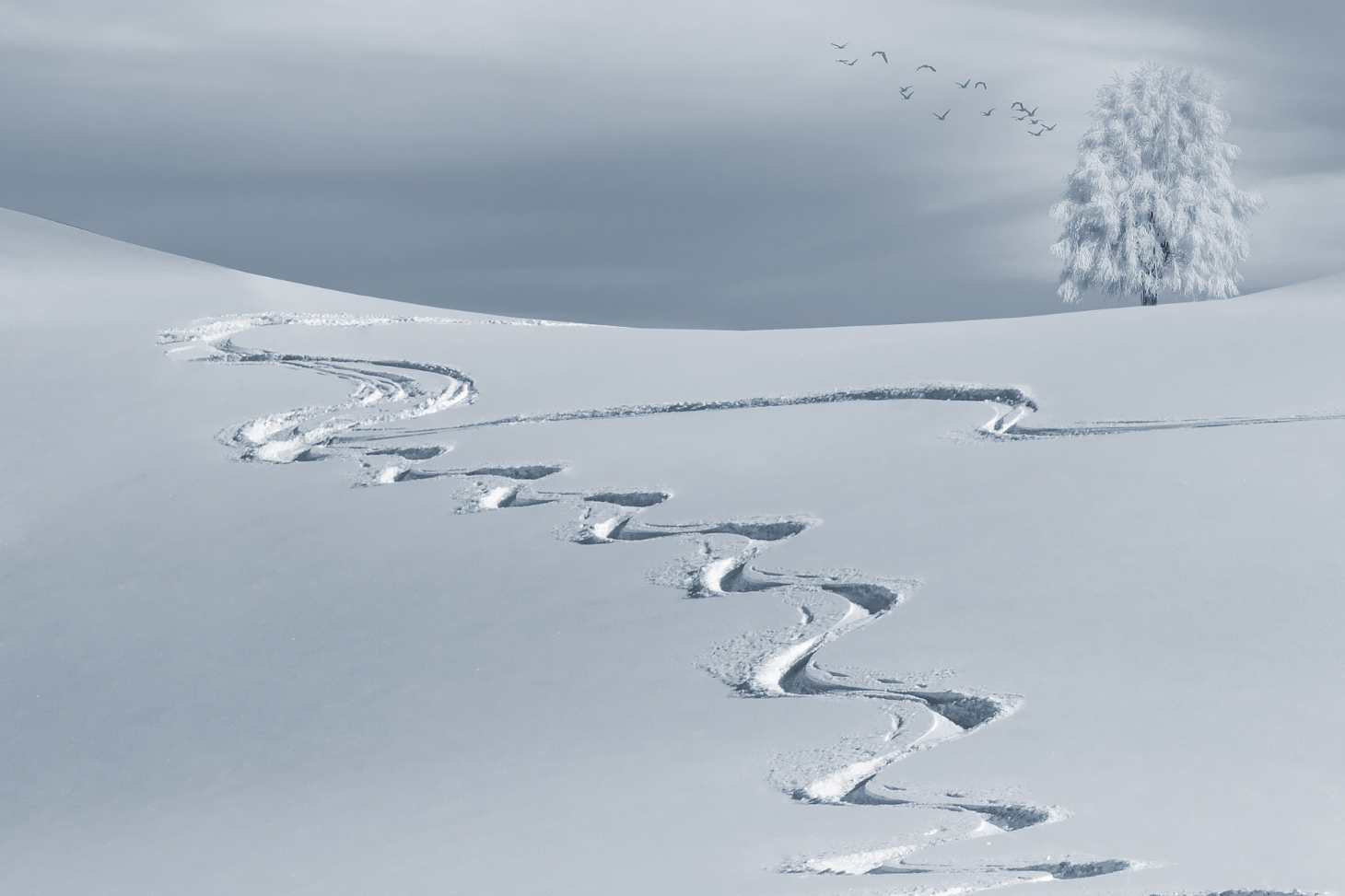Scientists from the Institut des Géosciences de l’Environnement of Grenoble (IGE / CNRS - INRAE - IRD - UGA - Grenoble INP-UGA), the Centre d’Etudes de la Neige (CEN / CNRM / Météo-France - CNRS) and the Groupe de Météorologie Expérimentale et Instrumentale (GMEI / CNRM / Météo-France - CNRS) have developed a new approach for measuring the interaction between snow and sunlight. This methodology is important to improve the accuracy of climate models. They did X-ray tomography experiments at ID19. The results are published in Nature Communications.
Once deposited on the ground, snow is a material composed of air and ice crystals, whose shape and arrangement vary greatly at the micrometre scale. This is known as the microstructure of snow (Fig.1). This "skeleton" of ice and air governs the propagation of light within the snowpack through optical phenomena such as refraction and internal reflections in the ice phase.
However, despite its extreme complexity and irregularity, natural snow is still represented in a simplistic manner in almost all optical models, including those implemented in climate models. These models typically depict snow as a collection of ice particles with perfect geometric shapes, mainly spheres. Among the many implications for the energy balance of snow, this simplification leads to significant uncertainties in climate modelling, with potential impacts of up to 1.2°C on global air temperature.

Figure 1 legend: This is what fresh snow looks like at the micrometer scale. We call this arrangement of ice and air 'snow microstructure'.
In this new study, the authors from the Institut des Géosciences de l’Environnement of Grenoble (IGE / CNRS - INRAE - IRD - UGA - Grenoble INP-UGA), the Centre d’Etudes de la Neige (CEN / CNRM / Météo-France - CNRS) and the Groupe de Météorologie Expérimentale et Instrumentale (GMEI / CNRM / Météo-France - CNRS) have accurately simulated the light propagation in a collection of 3D images of snow microstructure obtained by X-ray tomography, using a ray-tracing model. Very different snow types were investigated, from fresh snow (PP) to refrozen melt-freeze forms (MF). Some images were obtained at the 3SR-Lab. Several snow microstructures required higher resolution and were acquired at ESRF beamline ID19.

Figure 2 legend: The optical shape of snow, defined and quantified by two parameters: the absorption enhancement parameter B and the geometric asymmetry parameter gG. The take-home message here: snow covers an area of the figure totally different from that covered by simple geometric shapes.
The results show that for sunlight, snow is not equivalent to spheres or other simple shapes, contrary to what is currently done in many snow optical models (Fig.2). For the first time, accurate values for the optical shape of snow have been deduced, values that can be used directly in climate models, instead of the sphericity assumption. Based on the usually investigated geometrical shapes, the uncertainties related to the optical shape of snow in these models would be divided by 3. At the same time, these results show that, despite the very different microstructures of snow, the distance travelled by sunlight in ice is, on average, always the same. In other words, snow is fundamentally ergodic.
This work represents a paradigm shift in the way snow is represented in optical models. Beyond climate simulations, these results can be beneficial wherever snow optics is important, from snow photochemistry to remote sensing algorithms.
Frédéric Flin, co-author of the study and leader of MiMESis-3D, an ANR project dedicated to the metamorphism and properties of snow from 3D images, is a long-term user at the ESRF. He explains the value of the facility in complex snow research: “The experiments on ID19 provide excellent quality tomography data of samples of snow or frozen materials, using specifically dedicated cold cells”.
Flin and colleagues can follow the crystalline evolution of each of the grains of ice and how the microstructure of snow evolves depending on thermal conditions. They work to improve knowledge and modelling of the snowpack, for applications related to avalanche risk or the impact of the snow in the climate system.




